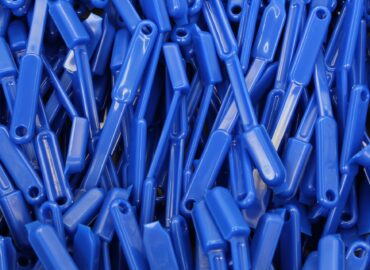Designing a Plastic Product requires a lot of consideration and concentration. The CAD designer has to keep a lot of things in mind while designing to avoid cost overruns. The main goal of a designer is to achieve product functionality, accuracy, and cost-efficiency.
Plastics nowadays are proving to be better than traditional materials like metals and others because of their modifiable properties. High-performance plastics are proving to be better than many other materials in many applications. All kinds of industries are now making use of plastic materials.
Plastic products have many benefits like scalability, ability to make complex designs, ability to make hundreds and millions of virtually identical parts, etc. Therefore, plastics are been given the preference wherever possible. Several types of plastics available fulfill the requirement of different properties.
To achieve the accuracy and functionality of plastic products, we have come with 10 pieces of advice for CAD designers.
Material Selection
The first and most important step in designing a Plastic product is the selection of material. The selection of plastic material is not an as easy task as it sounds. It is a complex process in itself due to the reason that to find all the properties required by a product in a single material is sometimes difficult. If the right material is not chosen, it will fail the whole purpose of the product. To select the best product you need to have an understanding of the behavior of each material in different conditions. The factors which generally affect the selection of plastic materials are Temperature, Chemical Resistance, Cost, Availability, Agency Approvals, Finish, Assembly, etc.
Uniform Wall Thickness
Uniform wall thickness is a very important aspect of plastic product design. Plastics generally shrink when they cool off causing stresses which you might miss accounting for during the design. Plastics also tend to melt towards thicker areas, this is due to their tendency to flow to areas of less resistance. Non-uniform thickness causes dimensional instability, warpage, etc. To avoid these issues, one can make use of ribs. Another problem with non-uniform thickness is that thick cross-section tends to cool slower than thin cross-sections which result in distortion. Therefore, the importance of wall thickness is huge in designing a plastic product.
Importance of Draft Angle in Designing a Plastic Product
Draft Angle is important to provide to the mold because before opening the mold, the plastic begins to cool. The draft angle makes it possible to smoothly eject the resin from the mold. If you do not provide a draft angle, the resin tends to stick to the core and the cavity wasting your effort and cost. It is necessary to provide a draft angle to both core and cavity. Generally, the draft angle ranges from 2 degrees to ¼ degree. It is also possible to provide a zero draft angle but for that, there are several other considerations. To provide a zero draft angle the material selection, surface finish, ejection method, and releasing agents are things on which you have to make your decisions.
Importance of Radius in Designing a Plastic Product
One must provide radius at the sharp corners to avoid dimensional instability in a plastic product. Wherever the sharp corners are present, it obstructs the flow of plastic. The sudden transitions lead to improper packing in the cavity. Providing smooth transitions both inside and outside of the wall creates uniform thickness and smooth flow of the resin. Sharp corner puts stress in the plastic which results in warpage and dimensional instability of the product.
Best Practices for providing a radius are:
The inner radius of a sharp corner must at least be half of the wall thickness.
The outer radius of a sharp corner should be equal to the part thickness plus the inside radius
Therefore, a CAD designer must understand the importance of providing a radius on sharp corners when designing a plastic product.
Importance of Ribs in Designing a Plastic Product
The sole aim of providing ribs is to increase the strength of the product and provide stability to the plastic structure. It gives rigidity and stiffness to the plastic products. There are certain best practices that you need to follow related to ribs to impart the best qualities.
- The ribs should be less thick than the wall. It is recommended that it is 60% – 80% of the wall thickness, depending on the material.
- You should try to add more ribs in comparison to larger ribs.
- The spacing between the ribs must be 2 times the wall thickness.
- The height of the ribs should be less than 3 times the nominal wall thickness.
Therefore, In designing a plastic product, ribs play an important role in providing structural stability and strength to the product.
Importance of Gate Location/Size in Designing a Plastic Product
Gate is that part from where the plastic enters into the cavity or the core of the mold. The gate location and size decides whether the core and the cavity fill properly. This is a very critical part of plastic product design as it can make or break the product. The best location of a gate is where the resin enters the thickest part section of the core or cavity and then flows to the thinner section. This ensures that the melt is properly injected into the cavity.
Importance of Mold Flow Analysis in Designing a Plastic Product
Mold flow analysis is the study of the behavior of the plastics in a virtual mold. Mold analysis software is available which creates a virtual mold and the visualization of the flow of plastic into the cavity can be seen. You can check various parameters like pressure, temperature, stress, etc at different points. This analysis has become so important because it allows you to make changes to your design before the actual production hence, saving the cost. You can identify the problems beforehand and make suitable up-gradations in the design. If a CAD designer is proficient in mold flow analysis, it helps in designing plastic products.
Avoid Undercuts While Designing a Plastic Product
You must avoid undercuts on your product. The undercuts make it difficult to eject your product from the mold. The undercut portion generally gets stuck in the mold on hardening and cooling off. On products where it is not possible to avoid undercuts, you will have to make use of lifting and other mechanisms. The use of other mechanisms for ejections will increase your production cost. Therefore, its better for a CAD designer to avoid undercuts while designing a plastic product.
Shrinkage and Warpage Considerations while designing a Plastic Product
Every plastic material has different rates of shrinkage and their cooling time are different. The degrees of these defects are also different for different plastic materials. These properties of plastic materials make it necessary to make considerations for shrinkage and warpage. Shrinkage is the difference in the linear dimension of the mold and the molded product. On the other hand, the warpage is the distortion caused in the product by excess residual stress. Considerations have to made for material, tool, geometry considerations, etc. Therefore, while designing a plastic product, a CAD designer must take these into considerations.
Considerations for Assembly Points
Assembly points like locking points are a critical part of designing a plastic product. You shall keep the dimension slightly lesser to that of the actual dimension. This is because there can be variations in the dimension of the molded part as it is dependent on various factors like mold, material, ejection, etc. You can later increase the dimensions but if the molded product is of higher dimension it becomes a costly affair and it also reduces the mold life. This is an important consideration in designing a plastic product which only an experienced person can tell you.
These are our 10 advice for designing a Plastic product. We welcome your questions and also if you can share your experiences in the comment box.
Happy Designing!






Someone necessarily lend a hand to make severely posts I would state. Agace Hal Roswell
I am sure this post has touched all the internet visitors, its really really good paragraph on building up new web site. Ardisj Bond Susette